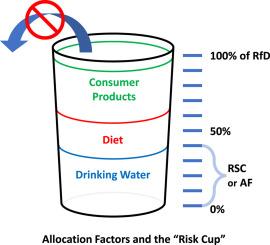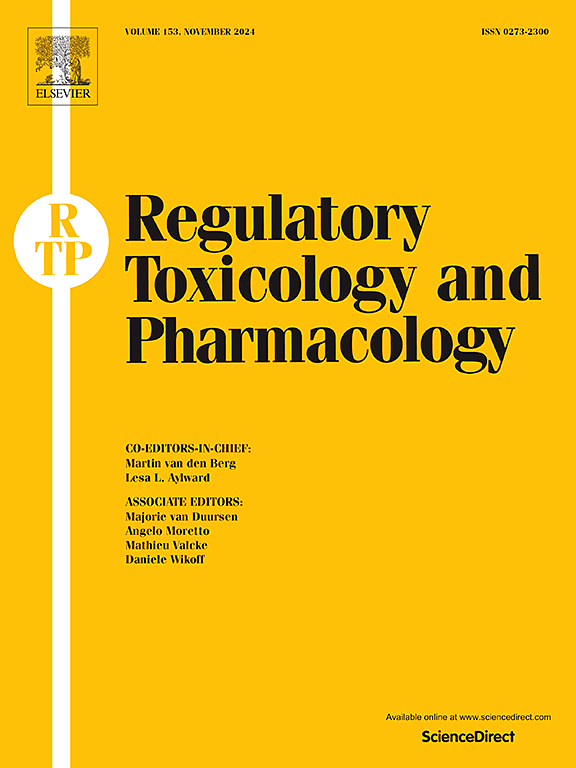A review of common approaches to determining allocation factors and relative source contribution factors for drinking water contaminants: caveats and areas for improvement
IF 3.5
4区 医学
Q1 MEDICINE, LEGAL
引用次数: 0
Abstract
Relative Source Contribution (RSC) factors, or Allocation Factors (AF), in the 0–100 % range are commonly applied for calculating non-cancer health-based guidance values (HBGVs) for drinking water. The use of an RSC/AF allows consideration of non-water exposures when developing HBGVs. An RSC/AF value can be calculated from chemical-specific exposure data or assigned a default value based upon qualitative information or a lack of data. In this review, we analyzed RSC/AF procedures and outcomes from six agencies and 30 published scientific papers. For agency-derived RSC/AF values, default values with no rationale provided were most common, followed by default values informed qualitatively by data, non-default values informed qualitatively by data, and non-default values calculated from data. Data-based non-default RSC/AF values were uncommon due to insufficient exposure data for critical population groups. Furthermore, we found that the bases for RSC outcomes are poorly documented, making analysis of the decision process sometimes impossible. For RSC/AF values from the literature, we observed proportionally more data-calculated RSC/AF values compared to agency results. Our findings indicate a need to make better use of available exposure data, including allowing a wider range of default options and/or the use of modeling approaches. A decision matrix is proposed in this regard.

审查确定饮用水污染物的分配因素和相对来源贡献因素的一般方法:注意事项和需要改进的领域。
0-100%范围内的相对源贡献(RSC)因子或分配因子(AF)通常用于计算饮用水的非癌症健康指导值(hbgv)。RSC/AF的使用允许在开发hbgv时考虑非水暴露。RSC/AF值可以根据化学品特定暴露数据计算,也可以根据定性信息或缺乏数据指定默认值。在这篇综述中,我们分析了6个机构和30篇已发表的科学论文的RSC/AF程序和结果。对于机构派生的RSC/AF值,最常见的是没有提供基本原理的默认值,其次是由数据定性地告知的默认值,由数据定性地告知的非默认值,以及由数据计算出的非默认值。基于数据的非默认RSC/AF值不常见,因为关键人群的暴露数据不足。此外,我们发现RSC结果的基础记录很差,使得决策过程的分析有时是不可能的。对于文献中的RSC/AF值,我们观察到与机构结果相比,数据计算的RSC/AF值按比例更多。我们的研究结果表明,需要更好地利用现有的暴露数据,包括允许更大范围的默认选项和/或使用建模方法。在这方面,提出了一个决策矩阵。
本文章由计算机程序翻译,如有差异,请以英文原文为准。
求助全文
约1分钟内获得全文
求助全文
来源期刊
CiteScore
6.70
自引率
8.80%
发文量
147
审稿时长
58 days
期刊介绍:
Regulatory Toxicology and Pharmacology publishes peer reviewed articles that involve the generation, evaluation, and interpretation of experimental animal and human data that are of direct importance and relevance for regulatory authorities with respect to toxicological and pharmacological regulations in society. All peer-reviewed articles that are published should be devoted to improve the protection of human health and environment. Reviews and discussions are welcomed that address legal and/or regulatory decisions with respect to risk assessment and management of toxicological and pharmacological compounds on a scientific basis. It addresses an international readership of scientists, risk assessors and managers, and other professionals active in the field of human and environmental health.
Types of peer-reviewed articles published:
-Original research articles of relevance for regulatory aspects covering aspects including, but not limited to:
1.Factors influencing human sensitivity
2.Exposure science related to risk assessment
3.Alternative toxicological test methods
4.Frameworks for evaluation and integration of data in regulatory evaluations
5.Harmonization across regulatory agencies
6.Read-across methods and evaluations
-Contemporary Reviews on policy related Research issues
-Letters to the Editor
-Guest Editorials (by Invitation)

 求助内容:
求助内容: 应助结果提醒方式:
应助结果提醒方式:


